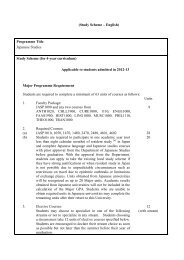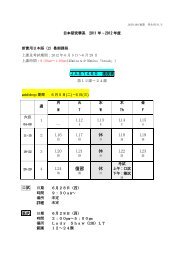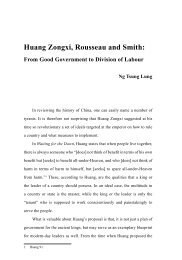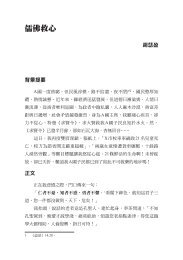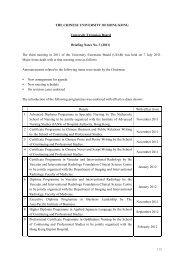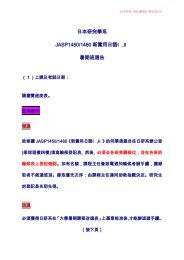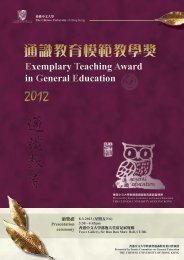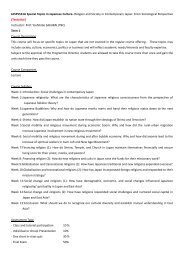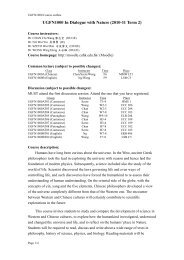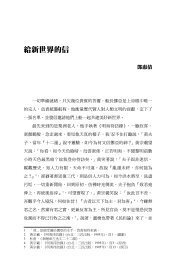ä¸è¼å ¨æ¸ - The Chinese University of Hong Kong
ä¸è¼å ¨æ¸ - The Chinese University of Hong Kong
ä¸è¼å ¨æ¸ - The Chinese University of Hong Kong
You also want an ePaper? Increase the reach of your titles
YUMPU automatically turns print PDFs into web optimized ePapers that Google loves.
Susan Gano-Phillips, Affective Learning in General Education 21<br />
In fact, some <strong>of</strong> the largest challenges posed by affective learning relate<br />
to the assessment <strong>of</strong> affective ILOs. Even when ILOs have been clearly<br />
specified and any <strong>of</strong> a wide variety <strong>of</strong> aligned teaching and learning methods<br />
(TLAs) have been employed to promote the achievement <strong>of</strong> these outcomes,<br />
the assessment <strong>of</strong> affective learning outcomes requires creativity and, <strong>of</strong>ten,<br />
new learning on the part <strong>of</strong> faculty. This is because affective learning, unlike<br />
cognitive or psychomotor learning, cannot always be measured in direct ways.<br />
Instead, it may be instructive to think <strong>of</strong> the assessment <strong>of</strong> affective learning<br />
as occurring in two broad categories: direct assessments (similar to those<br />
for cognitive and psychomotor learning outcomes) and indirect assessments.<br />
Direct assessment involves examining samples <strong>of</strong> the direct work output <strong>of</strong><br />
students, such as their performance in answering examination questions, in<br />
making a speech, or in mastering a clinical skill like venipuncture. Indirect<br />
assessment, on the other hand, refers to gathering information about student<br />
learning by looking at indicators <strong>of</strong> learning other than direct student work<br />
output. Indirect assessments are quite diverse and can include a wide variety<br />
<strong>of</strong> measures such as surveys, exit interviews, employer ratings, focus groups,<br />
or even reflective writing. Indirect assessments predominate in the affective<br />
learning domain. However, both direct and indirect assessments <strong>of</strong> affective<br />
learning outcomes are considered below.<br />
Direct Assessment <strong>of</strong> Affective Learning Outcomes<br />
<strong>The</strong> direct assessment <strong>of</strong> affective learning outcomes is most common at<br />
the lower levels in the affective learning taxonomy <strong>of</strong> Krathwohl et al. (1964).<br />
Some affective outcomes are written at a level where a direct assessment<br />
<strong>of</strong> behavior can provide evidence <strong>of</strong> the achievement <strong>of</strong> the affective ILOs.<br />
Instructors can, for example, take attendance to quantify the willingness <strong>of</strong>



